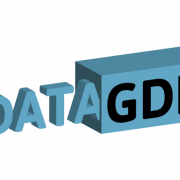Local backups vs. cloud backups (and why you want both)
Whether you’re constructing a general business continuity plan or trying to defend your company against the latest cybersecurity threats, data backups play an important role in keeping critical information safe.
In general, backups fall into two categories, known as local and cloud backups. Here’s what you should know about these two types of backups and why a hybrid approach involving both is typically the best solution for businesses.
Understanding the difference between local and cloud backups
Both local and cloud data backups create copies of critical data. You can use these to restore your IT assets in the event of data loss.
In the case of local backups, the data is stored on one or more devices that are on the same local network as the computers or servers that are being backed up. External hard drives and magnetic tape drives are two common mediums used for local storage backups.
It is common practice to store the medium used for local backup on-site by the company that owns the data.
Cloud backups, on the other hand, involve exporting data to a third-party cloud services platform over an internet connection. Data backed up onto a cloud platform is stored remotely, but can be accessed whenever it is needed.
Cloud backups are just one among many applications of cloud computing solutions, which approximately 96 percent of businesses now use in some way.
Advantages and disadvantages
Each type of data backup comes with its own set of pros and cons.
Local backups offer greater speed and more direct control over your data simply because they are located on site. At the same time, local backups are costly and difficult to scale up. This is mostly as a result of their reliance on on-site storage. Furthermore, they are also vulnerable to physical damage caused by fires or natural disasters.
You may not consider your business to be at serious risk of such physical dangers. However, you should have a disaster recovery plan nonetheless. When struck with natural disasters, some 40 percent of businesses never reopen, making it critical to prepare for them as best you can.
Cloud backups solve the problem of physical vulnerability by providing off-site storage. They are also much easier and more cost-effective to scale up as your business generates more data.
However, backing up data to the cloud can be a time-consuming process. The transfer speed will be highly dependent on the speed of your company’s internet connection. This concern will probably not be too major for very small businesses working with minimal amounts of data. However, backing up larger troves of data to the cloud can take quite a while. Especially when compared to the speed of a local backup.
Why a hybrid approach is best
If you’re looking for the best of both cloud and local backups, your business likely needs a hybrid approach.
Using both together, you can gain the faster backup capability and greater control offered by local storage, as well as the flexibility and stronger protection against physical disasters that come with cloud backups. With a hybrid approach, your data backups will protect your business against practically any eventuality.
Strategically, a combination of local and cloud data solutions is the best. It is a surefire way to achieve a flexible, cost-effective and secure backup strategy.
If your business is looking for the best way to protect its data, leveraging both local and cloud backups is a good place to start. Most managed IT service providers can help you to put hybrid data backup systems into place, making it easy to implement them in your business.
It may also be a good idea to have a data risk assessment conducted on your current systems if you’re thinking about improving them, as it’s important to know about your existing data vulnerabilities before proceeding.











